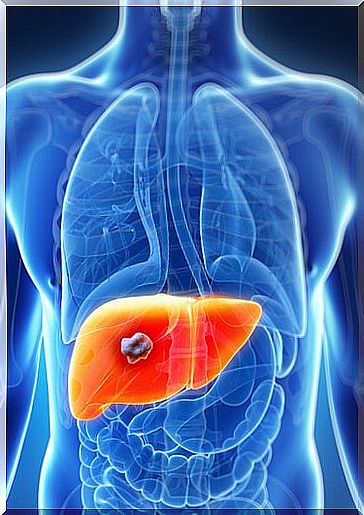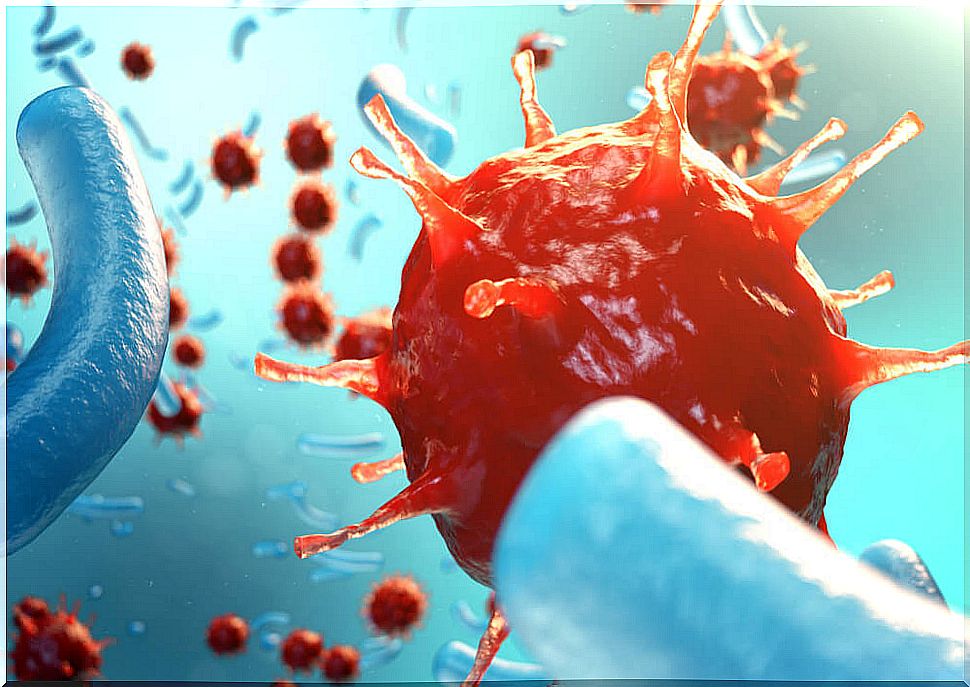New Research On Liver Cancer
The scientific community is continually advancing in the implementation of new treatments for cancer. As for liver cancer, these are some of them.

Hepatocellular carcinoma develops from a chronic liver disease caused by multiple risk factors. It has a strong association with chronic hepatitis B and C virus (HBV and HCV) infections.
Chronic hepatitis infections with other associated risk factors, such as hepatitis D virus (HDV) coinfection, alcohol use, and smoking, may present an increased risk of liver cancer.
What’s liver cancer?
The liver is one of the largest organs in the body, and it is located in the upper right part of the abdomen. It is made up of two lobes: right and left, the right being the largest.
There are different cell populations in the liver. Mainly, the organ is made up of hepatocytes, but we also find cells that line the blood vessels or cells that cover the ducts through which bile circulates.

Depending on the type of cell that is altered, we can find different types of tumors in the liver. These may have a different prognosis and treatment.
What is common to all types of tumors is that the cells that form them are abnormal cells. These have mutated and, as a consequence, their growth and division has gotten out of control.
Liver cancer treatments
The treatments for hepatocellular carcinoma are many and varied. They depend fundamentally on the type of cancer and its stage. Additionally, researchers are continually trying to improve such treatments.
Prevention
In the fight to fight liver cancer, of course, prevention plays a very important role. It is considered that almost half of the cases of hepatocellular carcinoma could be prevented thanks to the vaccines and improved treatments against hepatitis, the main risk factor for liver cancer.
Currently, new and improved methods of prevention of hepatitis C and B are being investigated, as well as new treatments to prevent these diseases from leading to liver cancer.

On the other hand, another risk factor for liver carcinoma is cirrhosis. Liver cirrhosis is a chronic disease that occurs as a result of ongoing damage to the liver. This damage usually comes from either infection with the hepatotropic virus or from excessive alcohol consumption.
The result of liver cirrhosis is that healthy liver tissue is replaced by fibrous tissue. This is similar to a scar tissue. This type of environment in the liver greatly favors the appearance of abnormal cells, which could lead to a tumor.
Cancer vaccines
This type of treatment aims to immunize the body against tumor cells. In this way, it is possible to help the immune system in its task of recognizing and destroying cancer cells.
Another objective of this treatment is to stimulate the immune system, something that is achieved with a drug called sargramostima, capable of stimulating the production and function of immune cells.
Antiangiogenic drugs
Anti-angiogenic therapies target the blood vessels that grow around the existing tumor. Tumors that arise in the liver need to form new blood vessels to irrigate and grow beyond a certain size.
These types of therapies act precisely by preventing the formation of these new vessels. Some of these drugs, such as sorafenib or regorafenib, are already being used in the treatment of hepatocellular carcinomas.
Currently, new antiangiogenic drugs are being developed and their efficacy being studied when combined with other types of treatments.
Gene therapy
Knowledge about the genes involved in different types of cancer is increasing. This would allow gene therapy to know where the gene alterations that must be corrected are located to avoid the appearance of cancer.
In this way, thanks to genetic modification technologies, it would be possible to suppress the protein expression of certain oncogenes, responsible for the pathology.
However, this type of treatment is still in the experimental phase and still needs to be refined to have a real application in humans.
On the other hand, another of the emerging therapies in this field would be based on the genetic modification of the tumor cells themselves. The aim of these modifications is to make cancer cells susceptible to certain drugs. While normal, unmodified cells would not be affected by the drug.
Finally, inactive chemotherapeutic agents would be used, which would be innocuous for healthy cells, but when they reach tumor cells, which carry a new gene capable of activating the drug, it would be effective and destroy only aberrant cells.









